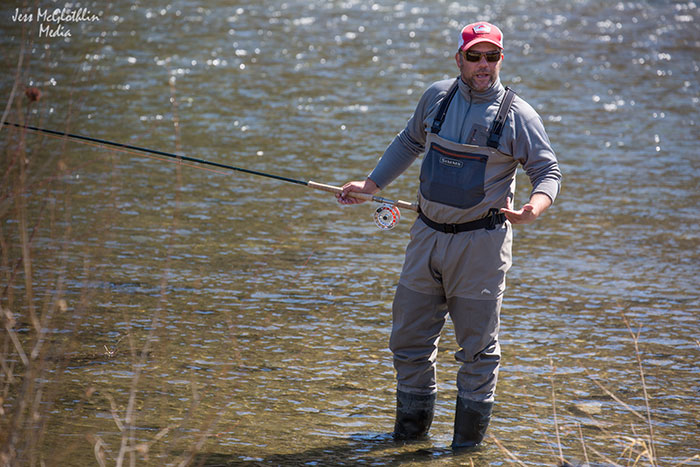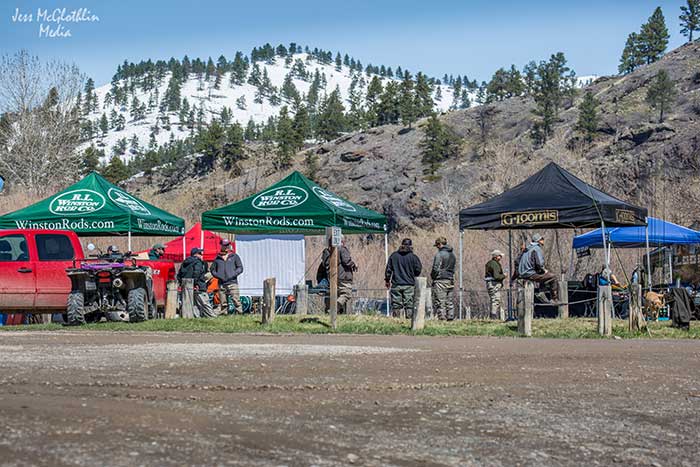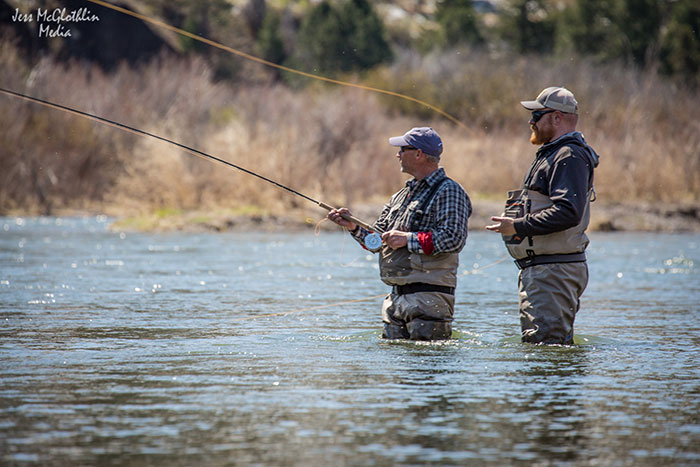
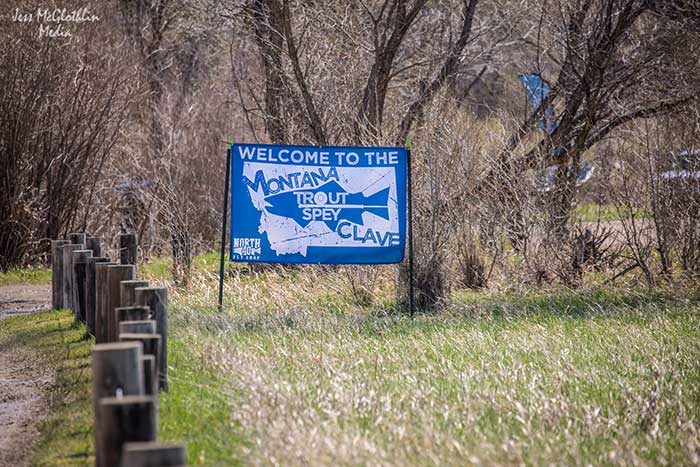
The Missouri River is developing a bit of a reputation for Spey. For two-handed fishing in general. And while, for many, using a two-handed rod for anything other than salmon or steelhead seems like a foreign concept, for a growing tribe of Montana anglers, it’s a thing.
The gang at Headhunters Fly Shop in Craig has been onto the Spey trend for years now. Clinics and free seminars throughout the winter months keep the old hands entertained and bring new two-handed anglers into the pack.
North 40 Fly Shop is getting into the program, as well, and last weekend hosted a Montana Trout Spey Clave at the Mid-Canon access on the Missouri. Despite wintery weather Friday, a strong group showed up Saturday for presentations from anglers including Trevor Covich, Tom Larimer, Brian Silvey, Michael White, Klaus Frimor, and others. Sales reps from G Loomis, Beulah, Echo, Loop, OPST, Simms, and Winston came, and the North 40 team had a strong staff representation.
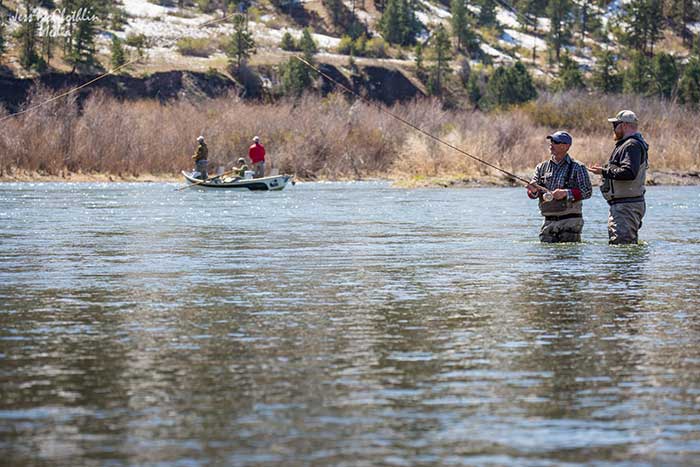
Trout Spey, you say? Here’s how North 40 defines the concept: “Spey casting was born on the River Spey in Scotland. It was traditionally performed with long two-handed rods of eighteen or more feet to target Atlantic salmon.
Spey casts are water based. There is no aerial back cast. Line tension between the water contact point (anchor) and the rod tip, along with the mass of the fly line between, form sufficient load for the cast. Hence, an angler can cast a long line with limited space behind them. Ten feet or less is often sufficient. Spey casts are very dynamic and energetic.
A good Spey caster can launch casts exceeding 100 ft. Tackle has rapidly evolved and we currently have many rod and line pairings to aid in the art of Spey. There are a variety of Spey casts that a trout angler can use with either single or two-handed “trout sized” rods. When we use Spey casting techniques and tackle for trout fishing, we call it Trout Spey.”

Spring is slowly coming to Montana, but many anglers were eager to take their new two-handed knowledge and hunt trout on the bountiful waters of the Mo. Personally, this is the time of year I typically stow my two-handed gear for fishing around Montana, but it may have to stay out a few extra weeks.
After returning from the Missouri I jumped on a plane to a very rainy Galveston, Texas, with teams from the American Fly Fishing Trade Association, the Ocean Conservancy, and Trout Unlimited. We’ve spent the week hosting a select group of outdoor writers for the inaugural Media Summit organized by the three organizations listed above. It’s been a productive week (although afternoon fishing sessions were shut down due to storms) and a fantastic line-up of speakers have briefed writers on both freshwater and saltwater conservation concerns. We have a long, hard conservation road ahead to conserve our fisheries, but it’s always encouraging to get a group of in-the-trenches experts together and learn the cold, hard facts.
